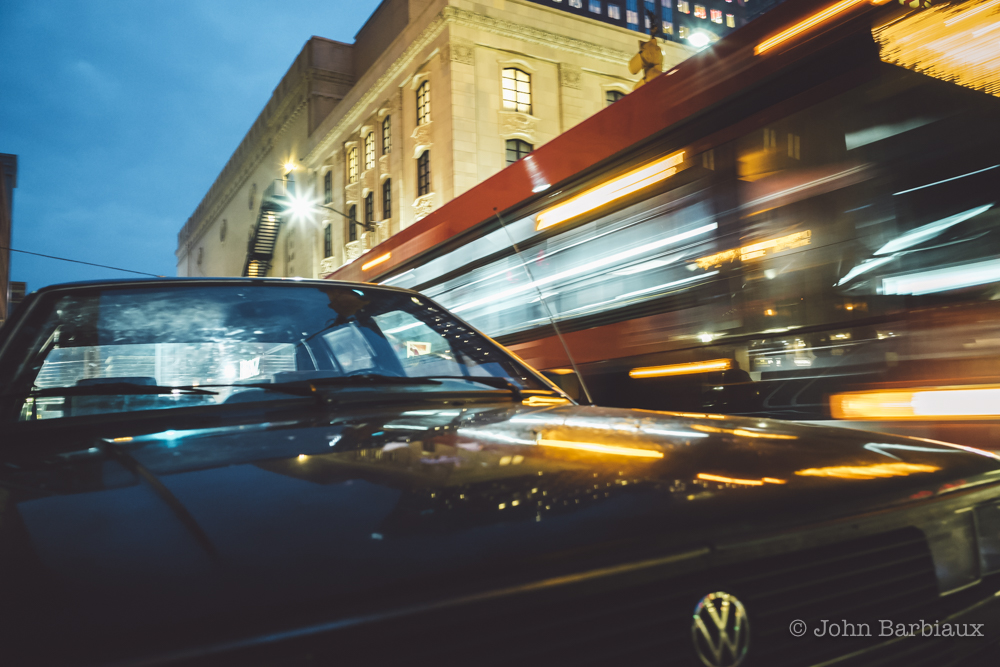Light trails are a fun challenge that a photographer can take on no matter what stage of their learning curve they currently reside on. You’ll tap your knowledge of shutter speed, aperture, and ISO (the exposure triangle). Creating interesting light trail images doesn’t stop there… The best photographs will make their rounds through Lightroom, Photoshop, and back again. In fact, if you’re the analytical type and want to learn photography I would recommend finding someone seasoned to walk you through creating your first long-exposure light trail image and I guarantee you’ll walk away learning more in an hour than weeks of reading your way through the interwebs.
The image above was actually four separate images I merged together in Photoshop. Each image was 10 seconds long, shot at f/22, ISO 100, and 70mm. For the final image I wanted a decent amount of light trails but I didn’t want them to crisscross too much looking cluttered. Also, when shooting in a city like Pittsburgh you can only use relatively short long-exposure times due to the number of stop lights… Once the vehicle stops so does your light trail, if it sits long enough you’ll end up with a bunch of ghost cars at the lights (you can eliminate these in post processing but why make your life more difficult).
The image below was taken earlier in the evening as I attempted the same thing I did above. I like the composition in the bottom image better than the top but the light trails in the top image came out much better. The shutter speeds for the bottom image (it’s a combination of about 10 images) were between 1 and 2 seconds.
 The light trails in the above image look like long dashes instead of lines because of the shorter shutter speed. Normally I would have used a 6 stop neutral density filter so I could leave my shutter open longer but it was all the way back in my bag that was on my back and I was too lazy… Besides, the sun was dropping fast and I knew I could increase the shutter speed as the night went on, I wasn’t going anywhere.
The light trails in the above image look like long dashes instead of lines because of the shorter shutter speed. Normally I would have used a 6 stop neutral density filter so I could leave my shutter open longer but it was all the way back in my bag that was on my back and I was too lazy… Besides, the sun was dropping fast and I knew I could increase the shutter speed as the night went on, I wasn’t going anywhere.
If you live in a city without many stop lights or can get close to a freeway (without getting hit by a car) you can use much longer shutter speeds (the image below was 30 seconds) and do so with just one image as opposed to merging multiple images of the same scene in Photoshop.
Feel free to leave your thoughts in the comments section below, thanks for reading.






Great shots! I’ve given it a go in the past but it has not worked for me……I’m going to give it another go. Do you think twilight or late night is best for a beginner?
Thanks! Twilight is good because you can ease into the longer exposure as the night gets darker. If you’re not going to combine the shots in post processing you’ll want to adjust your aperture narrower so you can use a shutter speed of around 15-20 seconds. I really recommend combining in post so you have more control over which lights show through each shot rather than relying on luck. If the sun sets at 8pm (it does here right now) I’d recommend getting set up around 7:30 and staying put until about 9pm. That will give you lots of practice and allow you to play with various shutter speeds to get the desired effect you want. In the earlier part of the evening you can use a shutter speed of 1 second on fast moving cars like a yellow cab for some cool blur effects.